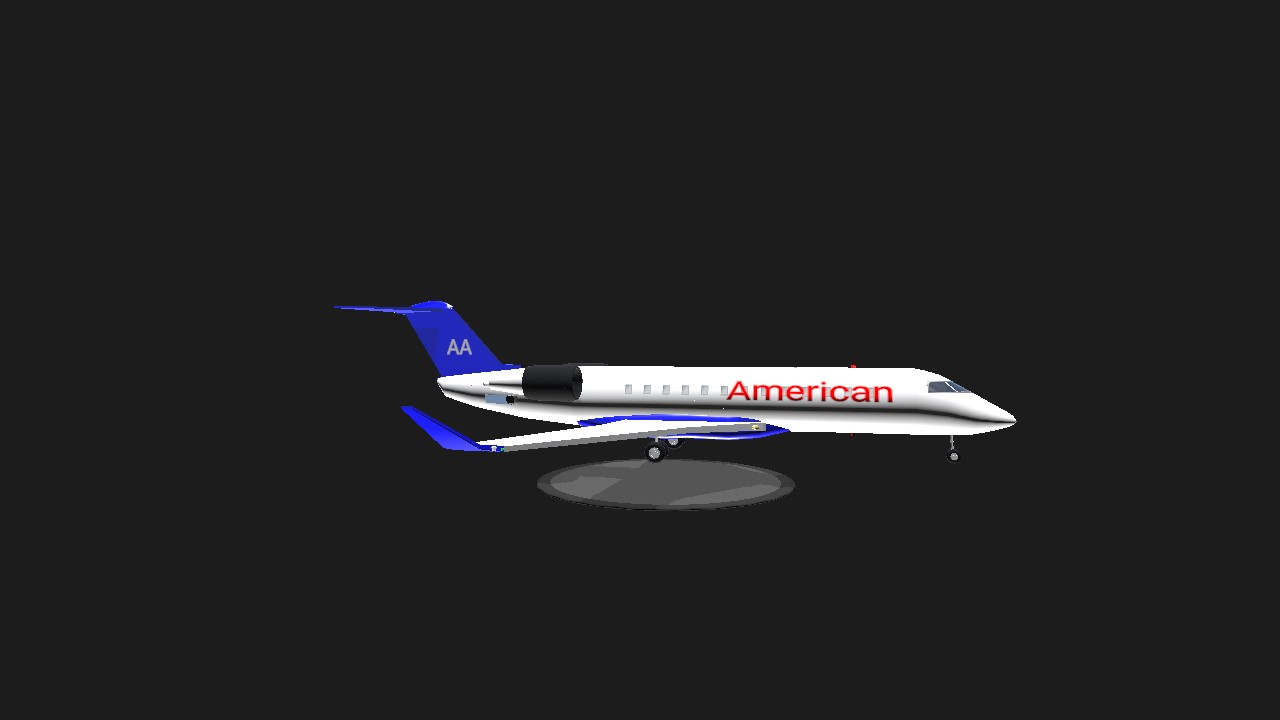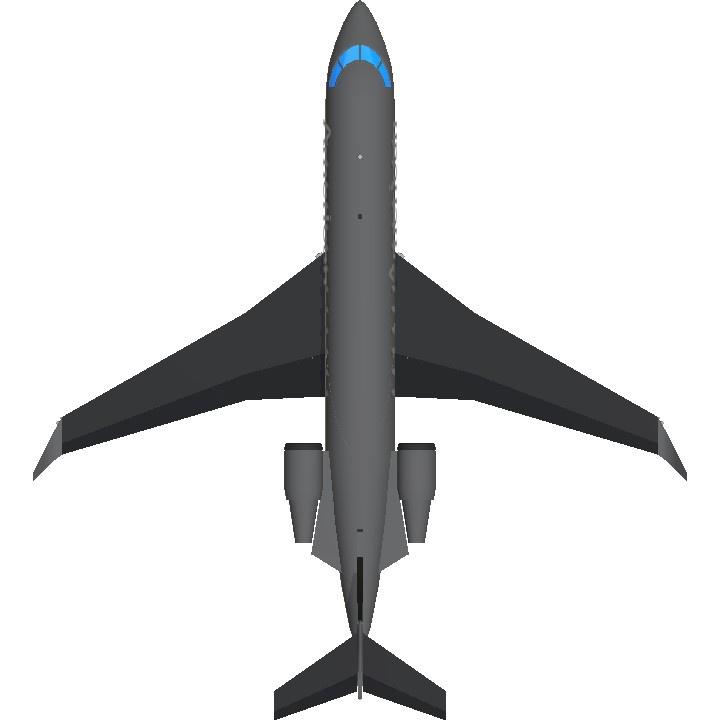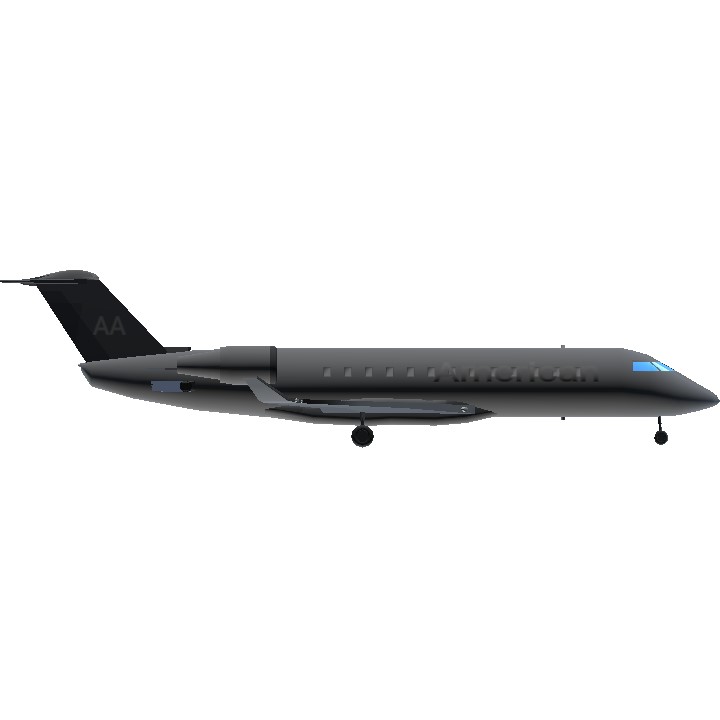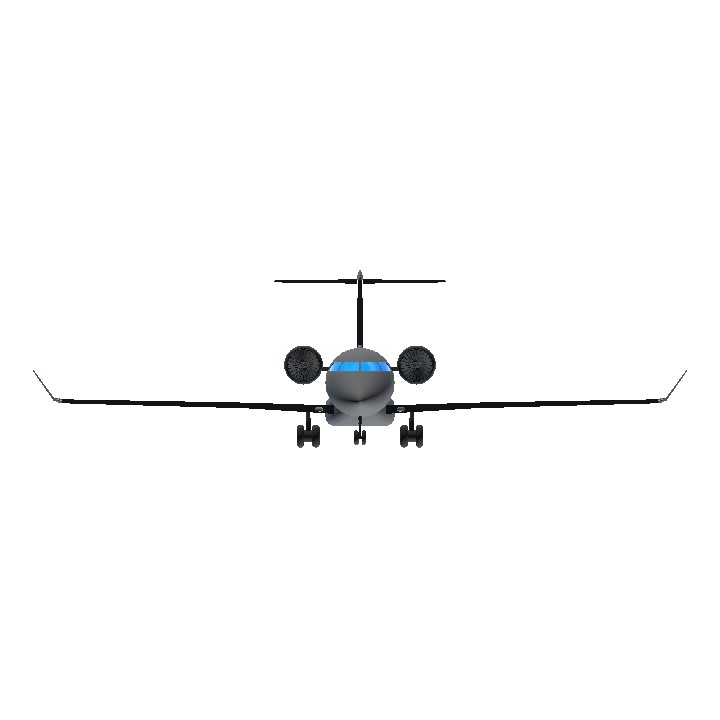This aircraft follows all the basic requirements to be automatically spawned by the AI. She is able to take off and land safely at the game's main airports. it is also a playable aircraft, you can enjoy aerial collisions, target shooting or Just enjoy more realistic and diverse air traffic in the game.
About the Aircraft: by Wikipedia

The Canadair CRJ 100, Bombardier CRJ 200 and CRJ 440 are medium-sized, high-performance twin-engine aircraft, with turbofan engines, capable of carrying 50 passengers on interstate and international trips. They were developed and manufactured in Canada from 1992 (CRJ 100) and from 1996 (CRJ 200) by the then Canadair and, later, by Bombardier Aerospace, a division of the Bombardier group. They used the Canadair Challenger executive jet for intercontinental transport as the basis for creation, but with a significant number of changes that make the Canadair CRJ 100 and the Bombardier CRJ 200 different aircraft models.
Canadair was controlled by the Canadian government and was purchased by the Bombardier group in the 1980s. The Canadair CRJ 100, also known as the Canadair CRJ 100 Regional Jet, was created to meet requests from regional airlines for a faster type of transport than the aircraft models with turboprop engines available until then.
Commercial aircraft with turbofan engines are economically and technically more advantageous when transporting passengers on trips of more than 750 kilometers, while turboprops have more advantages on trips of less than 500 kilometers and operating in smaller and less sophisticated airports than international airports in large cities, with runways less than 1,850 meters long and with obstacles close to the thresholds and extensions, with up to 6 degrees of inclination on the approach ramp.
The main advantage of the jet is greater productivity, due precisely to the higher cruising speed. Considering only the time aspect, just for comparison purposes, disregarding other technical aspects, such as, for example, the length of the landing strip, the jet can be up to twice as productive as a turboprop, traveling up to twice as many kilometers as a turboprop in the same day.
On the other hand, on trips of less than 500 kilometers, the turboprop can be up to 15% more economical, consuming less fuel.
In the 1980s and 1990s, then-manufacturer Canadair and, later, Bombardier, chose to offer two completely different equipment options to regional airlines, the Dash 8 turboprops (currently known as the Q Series) and the Canadair CRJ 100 and , later, the Bombardier CRJ 200, which is a modernized and updated version of the Canadair CRJ 100.
Canadair's technical team created the Canadair CRJ 100 regional jet project using as a base the Canadair Challenger executive jet project, for intercontinental transport, however the Canadair CRJ 100 has a significant number of differences that make it a different aircraft model, with Much longer fuselage, larger wings and more powerful engines.
The Canadair CRJ 100 is powered by two CF34 turbofan engines, manufactured by American General Electric. These engines are capable of producing approximately 8,700 pounds of power at takeoff. However, they have an additional power reserve of 500 pounds, available for takeoff on hot days, with full tanks and a cabin full of passengers.
This General Electric CF-34 engine was originally developed for military operations in aircraft used by the United States Air Force, therefore it was extensively tested by military aviation before being used in civil aviation. These engines are recognized as among the most reliable and efficient ever produced for commercial aviation.
Real Photo:

My Photo:


Specifications
General Characteristics
- Predecessor Bombardier CRJ-200/100
- Created On Android
- Wingspan 128.3ft (39.1m)
- Length 141.2ft (43.0m)
- Height 35.5ft (10.8m)
- Empty Weight N/A
- Loaded Weight 53,753lbs (24,382kg)
Performance
- Power/Weight Ratio 2.508
- Wing Loading 24.1lbs/ft2 (117.5kg/m2)
- Wing Area 2,232.6ft2 (207.4m2)
- Drag Points 15333
Parts
- Number of Parts 80
- Control Surfaces 9
- Performance Cost 498




